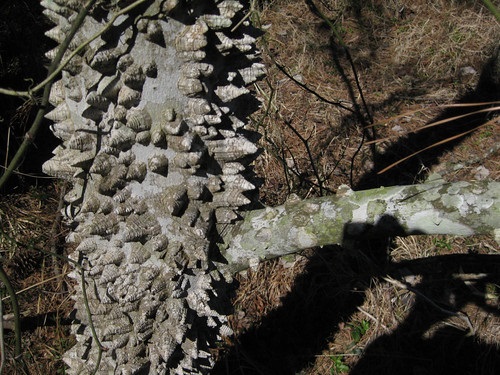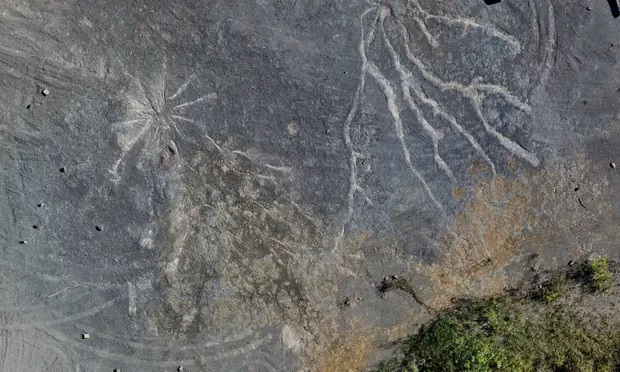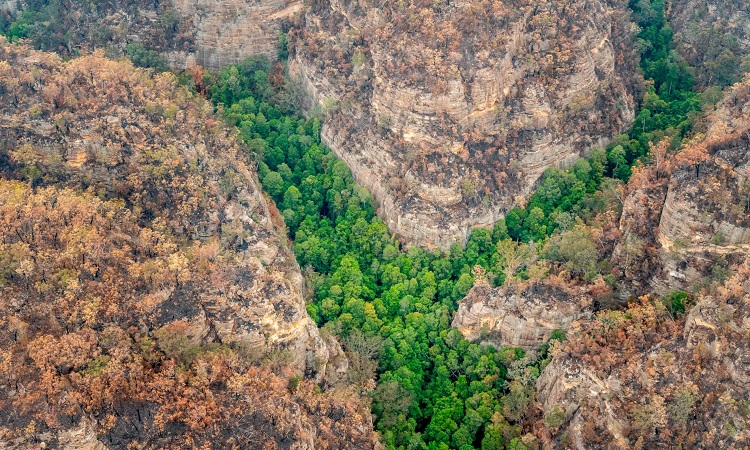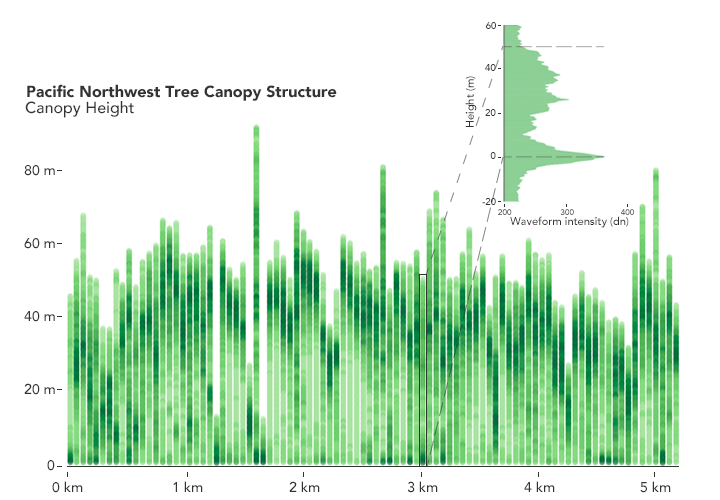For me, trees have always been the most penetrating preachers. I revere them when they live in tribes and families, in forests and groves. And even more I revere them when they stand alone. They are like lonely persons. Not like hermits who have stolen away out of some weakness, but like great, solitary men, like Beethoven and Nietzsche. In their highest boughs the world rustles, their roots rest in infinity; but they do not lose themselves there, they struggle with all the force of their lives for one thing only: to fulfil themselves according to their own laws, to build up their own form, to represent themselves. Nothing is holier, nothing is more exemplary than a beautiful, strong tree. When a tree is cut down and reveals its naked death-wound to the sun, one can read its whole history in the luminous, inscribed disk of its trunk: in the rings of its years, its scars, all the struggle, all the suffering, all the sickness, all the happiness and prosperity stand truly written, the narrow years and the luxurious years, the attacks withstood, the storms endured. And every young farmboy knows that the hardest and noblest wood has the narrowest rings, that high on the mountains and in continuing danger the most indestructible, the strongest, the ideal trees grow.
Herman Hesse, Bäume. Betrachtungen und Gedichte
Month: March 2020
Dendroprovenance
From Apple News:
A majestic ponderosa pine, standing tall in what is widely thought to have been the “center of the world” for the Ancestral Puebloan people, may have more mundane origins than previously believed, according to research led by tree-ring experts at the University of Arizona.
A study published in the journal American Antiquity provides new data that calls into question the long-held view of the Plaza Tree of Pueblo Bonito as the sole living tree in an otherwise treeless landscape, around which a regional metropolis in New Mexico’s Chaco Canyon was built.
Combining various lines of evidence, the study is the first to apply a technique called dendroprovenance to a sample of the plaza tree that uses tree-ring growth patterns to trace the tree’s origin. The data revealed that the tree did not grow where it was found, and is therefore unlikely to have played a role as significant as various authors have ascribed to it ever since it was discovered in 1924.
Toothache Tree

From Foraging Texas:
Prickly Ash trees are found not just in Texas but also worldwide. Here in North America they go by names such as Hercule’s Club, Tickle-Tongue tree, and Toothache tree. It’s very common to see these trees along fence line because ranchers would plant them there because cattle don’t like rubbing against them, so it would protect the fences. In more modern times these trees appear along fences lines thanks to seeds in bird poop.
The leaves and bark of these trees contains a fairly strong anesthetic. Native Americans would cut off one of the thorns and place it on the gum near their hurting tooth. After a few minutes that area would go numb, allowing a friend to yank the bad tooth out. Pioneers and early Texas settlers would use the leaves instead of the bark/spines.
Fossil Forest

From The Guardian:
The forest, found in the town of Cairo, would have spanned from New York to Pennsylvania and beyond, and has been dated to about 386m years old. It is one of only three known fossil forests dating to this period and about 2-3m years older than the previously oldest known fossil forest at Gilboa, also in New York state.
The forest would have been quite open and its ancient trees would appear alien to the modern eye. A walker would have encountered clusters of Cladoxylopsid, a 10m-tall leafless tree with a swollen base, short branches resembling sticks of celery and shallow, ribbon-like roots. The fossils also revealed a tree called Archaeopteris, something like a pine, but instead of needles the branches and trunk were adorned with fern-like fronds, giving it an almost hairy appearance. “It’s not something we can immediately recognise as a modern tree,” said Berry.
Saving from Extinction

From Scientific American:
The trees, known only as Madhuca insignis, are few and far between. Originally declared extinct more than a century ago, the 60-foot-tall, fruiting species was rediscovered in 2004. A year later it was added to India’s national priority list of endangered trees, but few if any actual protection efforts followed. By the time conservationists finally conducted the first major survey of the trees’ population—a three-year process between 2013 and 2015—only 27 individuals remained.
Dinosaur Trees

From The Guardian:
Firefighters have saved the only known natural stand of Wollemi pines, so-called “dinosaur trees” that fossil records show existed up to 200m years ago, from the bushfires that have devastated New South Wales.
The state’s environment minister, Matt Kean, said a specially deployed team of remote area firefighters helped save the critically endangered trees from the giant Gospers Mountain fire.
The pines are in an undisclosed sandstone grove in the Wollemi national park, in the Blue Mountains, about 200km north-west of Sydney. They were thought extinct until discovered 26 years ago.
Big Leaf Maple (Syrup)
From NPR:
There’s probably more written on how to kill a bigleaf maple tree than how to grow one, according to Neil McLeod of Neil’s Bigleaf Maple Syrup, a farm in the tiny northwestern Washington burg of Acme.
“It’s hard to kill,” McLeod says with a wry smile. “A great tree. Perfect weed. It makes good syrup.”
Measuring Stick

From NASA Earth Observatory:
“The amount of carbon that is being held in the land surface by trees, and how it has changed over time through disturbance and subsequent regrowth, is the least understood aspect of the global carbon cycle,” said Ralph Dubayah, a remote sensing scientist at the University of Maryland. “Until we know how much carbon there currently is in Earth’s forests, and how that has changed over the last 20 to 30 years, we will have a difficult time predicting how much more carbon forests will absorb in the future, and what role they’ll play in helping to mitigate or accelerate atmospheric carbon dioxide concentrations.”
Date-palms
From The Atlantic:
Adam, Jonah, Uriel, Boaz, Judith, and Hannah are date-palm trees, and although they were all planted in recent years, the seeds from which they germinated all came from ancient archaeological sites. These seeds, according to radiocarbon dating, were about 2,000 years old. They had waited two millennia to sprout.
the Ruthless Side of Forests

From Quanta Magazine:
Key to this picture is the revelation that the unseen underground world is just as complex, sophisticated and purposeful as the visible aboveground world we inhabit. Microbes are not simple, passive accessories to plants, but dynamic, powerful actors in their own right. Fungi can hoard nutrients, they can reward plants that are generous with their carbon reserves and punish ones that are stingy, and they can deftly move and trade resources to get the best “deal” for themselves in exchange.